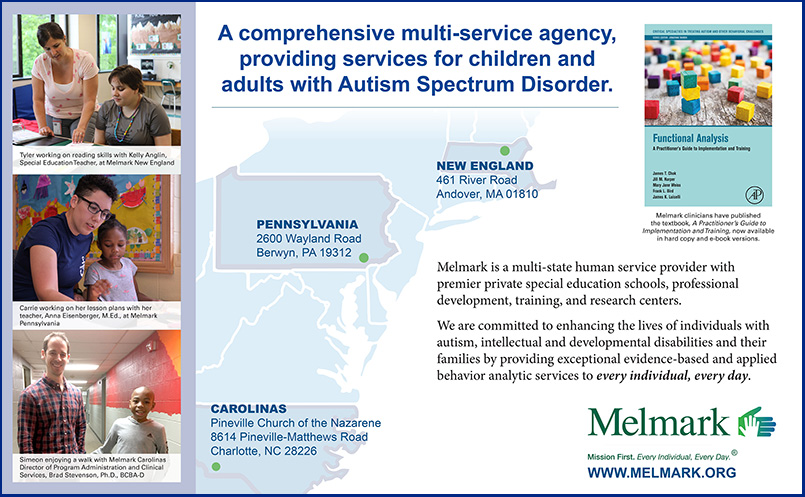The recording and analysis of behavioral data is a cornerstone of evidence-based behavioral health treatment. Over the past several years, data across a spectrum of health metrics collectively known as Health Informatics, has taken hold in the provider community. Health Informatics data can include any health related measures like weight, sleep, seizure activity and bowel movements. This article will review the promise of combining the two datasets – behavioral and health – to yield new client insights, discover functional connections between behavior and health, and ultimately guide practitioners to improved treatment protocols.

It All Starts with a Database
Where an organization stores their data is a key factor in their ability to mine the data to its fullest potential. Data stored on paper datasheets limits analysis to what’s on the page. When transcribed into a spreadsheet like Excel, that same data can be recorded next to data from other similar measurements for increased cross-behavioral analysis. Spreadsheets, however, are not designed to efficiently store or link data across large sets of data.
The next level is a database, an application that stores all of your data in a structured format designed to ease the process of retrieving and making connections between vast amounts of data. Databases are designed to quickly and efficiently record, store, and report on a virtually limitless number of clients, variables, and connections between those variables. These connections, or relationships, are built between the sets of data to eliminate duplication and build a foundation for asking questions that span all the data. In this way, one can efficiently compare vast amounts of data to build potential connections and correlations, which, in turn, can be used to improve client treatment, setting-level treatment, or drive organizational-level improvement. For example, if a particular behavioral intervention is used across many clients, the database can be asked, or queried, for all the outcomes across all the clients using that intervention. Further, if many clients are treated by one clinician, one could query the database for all outcomes from that clinician using that intervention. If you imagine all the data being structured and related in this way, the possibilities are endless for asking questions that further your understanding and, ultimately, treatment protocols.
It is important to note that the “database” described above is the application in which the collection of data is stored. For users to record, query, and report on that data requires an application to be built for the users to interact with that database. Any modern software that collects data, from social media to electronic medical records have a database behind them. An organization can purchase off-the-shelf database applications that meet their requirements, or, if none exist, can develop their own. Our organization has developed all of our clinical recording and reporting applications in-house based on decades of evidence-based experience, protocols, and workflow.
Adding Health Informatics to the Mix
In addition to behavioral health applications, our organization has developed web-based database applications to record, process, and analyze health data including sleep, bowel movements, menses, weight, seizure activity, well-body checks and more. We have incorporated design features in each of these apps to streamline our workflow and get key information to the providers who need it, when they need it. For example, our weight tracking application automatically alerts nursing staff if a client’s weight gain or loss exceeds predetermined thresholds over 30, 60 or 90 days.
Automated workflow, in combination with organizational policies that require scheduled data analysis by clinicians, results in a wraparound solution that ensures every client’s data is given the attention required to optimize treatment outcomes.
All of this health data is stored in the same database alongside the behavioral health data, like frequency and durations of targeted behaviors, and learning progress. Combining both sets of data in the same database simplifies the cross-analysis process by having a common understanding of who the clients are, a similar structure to the data, and a single database to extract the data.
Joining data across domains yields a virtually unlimited potential to ask and answer questions that unravel the function of behaviors and discover new opportunities for improvement at both the client level and organizational levels. For example, by combining sleep and behavioral data, research at our organization has shown a correlation between poor sleep quality and increased behavioral activity the following day. Insights such as this can be used to fine-tune an individual’s behavior support plan to factor-in poor sleep nights, for example. At an organizational level, this finding can inform changes in the overnight environment, bedtimes, light and noise levels, and more. Training can be implemented with outside providers, parents and guardians as to the importance of proper sleep to their client.
Similarly, other health variables on their own or in combination can significantly impact behavioral health and are often distant or immediate antecedents to behavioral episodes. As the dataset grows, so does the potential for discovery. When all of an organization’s client behavior and health data are accessible together, even cross-client findings can be discovered. For example, you may discover that an antecedent of one client’s behavior is a combination of less than four hours of sleep and a loud vocalization behavior from another client across the hall.
Methods of Analyzation
Databases store the data. Database queries are statements which ask, or query, the database to return the data you need for your particular analysis. That data, in turn, can be prepared as tabular reports, charts, or graphs for analysis. It is common for a database application to have reporting features which run common queries automatically and present results in tables, charts or graphs.
Regular visual inspection and interpretation of the data by clinicians remains a cornerstone of any treatment protocol. At our organization, we have programmed these reports into our web-based applications for retrieval at the push of a button. Standard graphs of progress, rates of behaviors, trends are a click away in real-time, providing the information a clinician needs when they need it. Many advanced reports, including many filters, are also available.
In addition to visual inspection, the data can be analyzed statistically using one of dozens of statistical software packages like the SPSS, RStudio Cloud, and MiniTab. Statistical engines can also be added directly into your custom application to do the work behind-the-scenes. Statistical analysis promises advantages in precision and volume: causation or correlation can be determined with confidence and accuracy across a vast number of variables. This level of analysis has the best chance of discovering connections between seemingly unrelated variables, like in the example of one client impacting another from a different room. The disadvantage is the relatively high level of complexity required to set up the analyses to ensure trustworthy and clinically useful results.
The Promise of Adding Health Data to Your Organization’s Data Profile
As practitioners and behavioral health organizations adopt new technologies, consideration should be given to developing or purchasing database applications which bring data together that traditionally would be recorded individually. Behavioral data and health data, as this article shows, can be combined discover useful, actionable information to optimize client treatment and bring continuous improvement at the organizational level.








I am glad that medical and behavioral health are going to be considered as
interconnected.